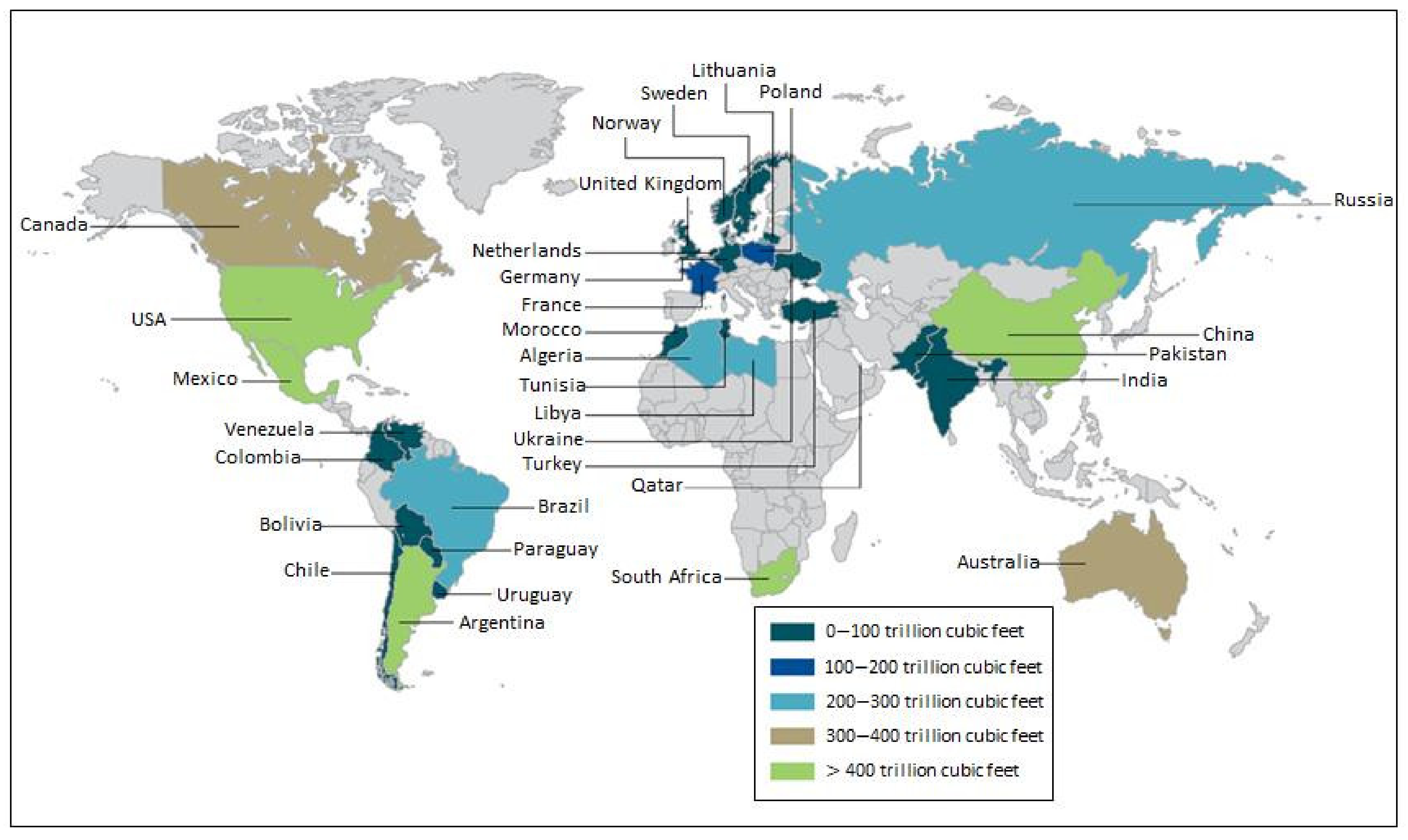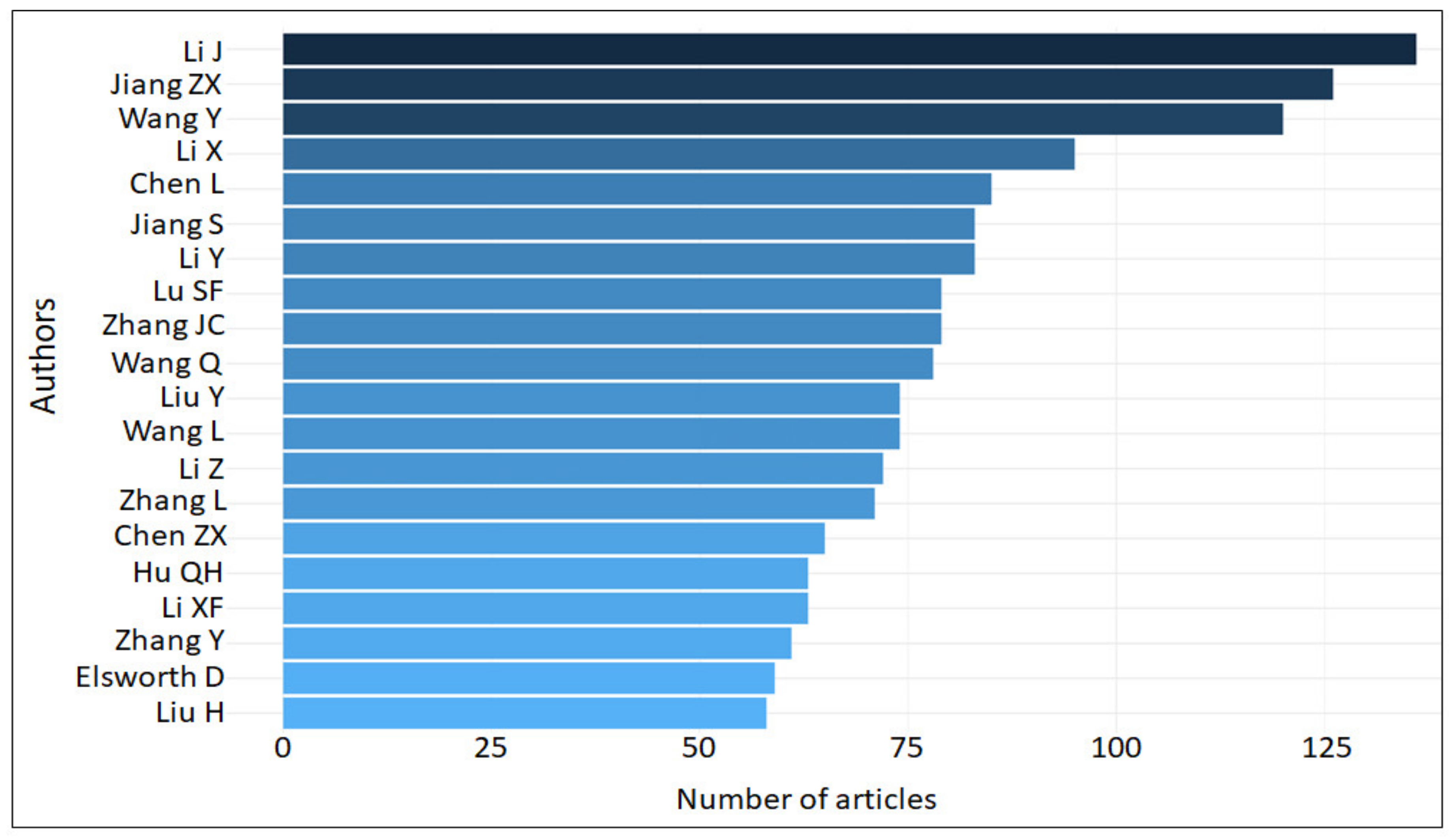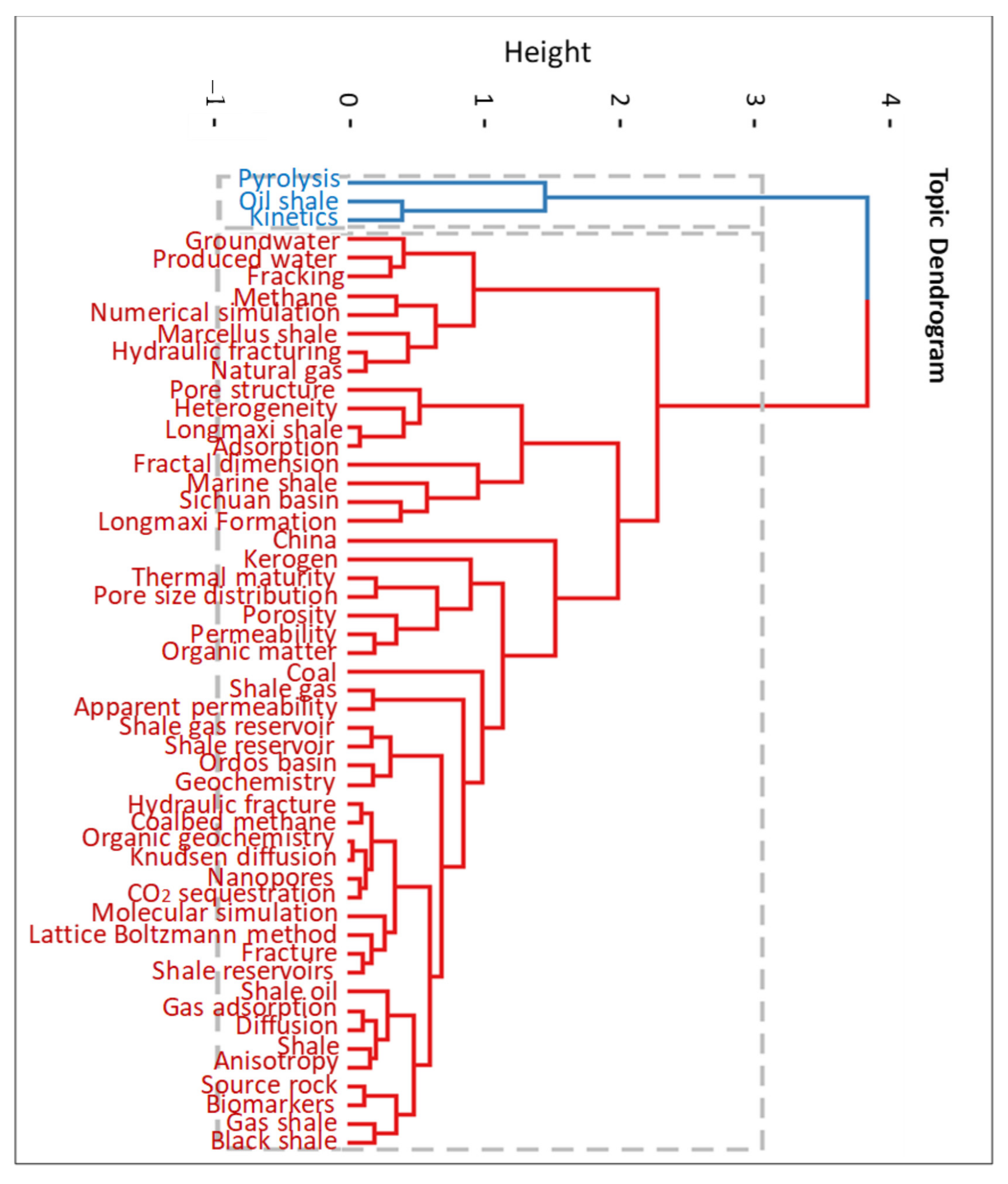1. Introduction
The production of commercial quantities of shale gas was very uncommon several decades ago [
1,
2]. However, with the recent boom or commercial production of shale gas from the Barnett Shale in the central Texas, United States of America (USA), many countries and exploration companies are intensifying their pursuit for the shale resource plays, expecting to find and exploit the next Barnett Shale. The natural gas that is extracted from underground shale deposits is globally known as shale gas, and it has become a progressively vital source of natural gas in the United States (US) over the past decade and interest has spread to Canada, Europe, Asia, and Australia (
Figure 1;
Table 1). The methods that were used for the Barnett Shales are now being applied to other sedimentary basins in the world, where conditions (i.e., organic-rich and thermally matured shales) are favorable for coaxing natural gas from the shales. Shale gas denotes a self-sourced unconventional natural gas that occurs primarily within fine-grained, low-permeability and organic-rich siliciclastic sedimentary rocks [
3]. Despite the prefix ‘shale’, this natural gas can also occur within a variety of rocks other than shale, including mudstones, siltstones, and carbonates [
3,
4]. Shale gas is generated and stored in-situ as adsorbed gas in kerogen and clay particles, and as free gas in the intergranular pore spaces and fractures [
3]. It can also be stored as solute gas in bitumen and organic matter [
5]. As more countries are showing keen interest in the shale gas revolution, exploration companies are realizing that an integrated method is vital to success.
The discovery of shale gas is one of the most significant energy revolutions in the last two decades and it is effectively changing the global energy market to date [
6,
7,
8,
9,
10,
11,
12,
13]. Shale gas represents a new opportunity or chance to strengthen energy security and at the same time, reducing emissions [
14,
15]. As a typical developing technology, shale gas has attracted global attention from the governments, non-governmental organizations (NGO’s), and researchers, which has led to the rapid growth rate of vital information on shale gas [
16,
17]. Fracking, also known as hydraulic fracturing, is a method of extracting oil and gas from the earth by drilling deep wells and injecting a mixture of liquids and chemicals at high pressure. Presently, the development of shale resources (shale gas) does not only bring new or innovative opportunities, but it also comes with some challenges (risks) or uncertain results. These risks have grown over time due to unknown factors and could vary with geographical locations.
The prospect of fracking in the Karoo has sparked a heated debate. The main concerns about shale gas exploration and extraction are the use of water and the environmental impact of hydraulic fracturing (i.e., fluid migration and shale degassing are poorly or not well understood). Excessive water use, chemical spills at the surface, the effects of sand mining for use in the hydraulic fracturing process, surface water quality degradation from waste fluid disposal, groundwater quality degradation, and induced seismicity from the injection of waste fluids into deep disposal wells are all environmental issues that are specifically related to hydraulic fracturing. Most of the people and farming activity in the Karoo depends on groundwater. With fracking requiring a large volume of water, nearly 20,000 m
3 per borehole [
5,
7], it poses a serious challenge with regards to water shortage. There is also the possibility that methane will migrate to the surface after the shale has been fractured. The Karoo also has a unique underground structure with many underground water channels, which may present new risks that have not been encountered at previously established sites in the USA. Other air contaminants are released during the various drilling procedures, which include the construction and operation of the well site, transportation of materials and equipment, and waste disposal. Some of the pollutants that are released by drilling include benzene, toluene, xylene, and ethyl benzene (BTEX), particulate matter and dust, ground level ozone, or smog, nitrogen oxides, carbon monoxide, formaldehyde, and metals that are found in diesel fuel combustion, and exposure to these pollutants has been linked to short-term illness, cancer, organ damage, nervous system disorders, birth defects, and even death [
11,
12,
13,
14]. The fracking debate is difficult to understand; pro-fracking supporters are frequently the same people who deny that humans are causing global warming. Fracking is big business and companies with vested interests are attempting to sway public opinion. So far, impact studies for fracking in the Karoo have been based on estimates, with those in favor of fracking seemingly using the best case scenario figures [
4]. However, anti-fracking groups make exaggerated claims as well. Both sides’ credibility is close to nil. This debate exemplifies how some scientific disagreements may not be resolved.
Over the last 10 years, fracking has changed that balance and led to a new boom in oil and gas production globally; especially in the USA. Some change comes from the oil price cycle, while some change comes from the increasing concern of environmental health. The total quantity of crude oil production in the USA has roughly tripled in the decade spanning from 2010 to 2020. Over the same time period, the amount of total US oil consumption that was provided by imports fell substantially. Likewise, prices across the board reflected the increased production. The timeliness of international collaboration has significantly assisted in reducing the risks that are associated with shale gas exploration and exploitation. There is a general belief that collaboration is very good and important in research, and it should be practiced or encouraged [
18]. According to [
19], research collaboration is an important way to develop as scientists. This development refers to improvement in terms of skills, knowledge, ideas, and information that is embodied in persons, and ultimately impact persons’ performance in the near future. The exploration and exploitation of shale gas is becoming more complicated as the regional geology of the area differs, making collaboration or teamwork necessary [
20]. With most countries looking for cleaner sources of energy and the rapid growth in shale gas research, geoscientists are specializing in a particular research field with limited skills or exposure to advance technology [
21]. Hence, the interaction with others is important to gain new knowledge. [
22] indicated that research collaboration among scientists is a crucial form that reflects scientific interactions, which often leads to “contact and connections for future work”. As reported by [
23], in a survey of 195 university professors, 90% of the respondents shows that research collaboration brings about new knowledge, information and ideas. Scientific collaboration facilitates the increase in scientists’ skills and knowledge, irrespective of whether collaboration is between junior scientists and experienced scientists, or between scientists of the same career status [
24]. Specifically, research collaboration with an experienced scientist exposes the inexperienced scientist to the knowledge new ideas, information, and skills that are regarded to be difficult to acquire [
25].
Countries all over the world are promoting the advancement of collaboration between researchers and institutions. The rate of international collaboration has significantly increased over the years with the belief that such collaboration will bring about several benefits (i.e., cost-savings, greater creativity, higher quality, and more impactful research). Owing to the increasing or rising need for collaboration between researchers, bibliometric analysis of research collaborations is also growing fast, from both the institutional and country levels through to the individual level [
26,
27,
28,
29]. The bibliometric technique is a quantitative statistical analysis method that is widely used to provide a general idea of extensive publications and to understand the present status quo in that particular research field [
30,
31,
32,
33,
34]. As documented by [
35,
36], bibliometric analysis is a vital tool to researchers because it helps in determining the research trend and hotspots of a particular study subject and provides references for establishing future research directions and collaboration international with other institutions and countries. However, despite the fact that a substantial number of publications are available on the different aspects of shale gas, very few bibliometric analyses has been performed on shale gas literature, resulting in the lack of information on the global research trend of shale gas and the level of research contributions in the field is unknown or poorly documented. Hence, the purpose of this study is to reveal the basic characteristics of the scientific activities in shale gas research between 2010 and 2020. The study also investigates research performance as well as examines the most influential authors and collaboration networks on institutional and individual levels. The objective of the study is to provide valuable shale gas information to any section of society, policymakers, and businesses that are involved in shale gas development. To achieve the objective of this study, the following research questions were addressed:
What is the global research trend of scientific publications on shale gas from 2010 to 2020?
What information can be generated or revealed from this trend?
What are the future research directions in the field of shale gas?
The answers to the aforementioned research questions would enable stakeholders (i.e., (governments, non-governmental organizations (NGO’s), scientific community, etc.):
to recognize the most productive authors, institutions, sources, and countries in this research area,
to know the leading research paths and impact from authors, sources, countries, and research topics in the shale gas literature,
to understand how publications on shale gas are clustered or understand the collaboration network of this research field,
to provide vital information for future research directions and to develop publication strategies.
The paper is structured as follows:
Section 2 gives an overview of shale gas and major bibliometric articles in this field. The methodology is documented in
Section 3.
Section 4 deals with the results and discussion of the bibliometric analysis. In addition,
Section 4 presents the conclusions of the study and outlines possible directions for future research.
4. Conclusions and Directions for Future Research
The success of the development of shale gas, especially in the USA, has created a lot of interest and attention in other countries in the world, in particular those that possess the potential of these resources. Considering the fact that many countries in the world are faced with the challenges of generating enough energy or power to meet the current and future demands of energy, it is extremely important to find solutions that would allow countries to meet the challenges of generating clean and sustainable energy. One of them is the shale gas concept, but its exploration and exploitation requires improvement in the present information and technical know-how. Therefore, scholars, companies, and policymakers that are responsible for energy development should have a broad theoretical knowledge in shale gas research. They should also familiarize themselves with the achievements and failures of companies/countries that have already attempted to exploit shale gas for energy production to benefit from their positive experience and avoid repeating their mistakes. For this reason, a bibliometric review of the publications on shale gas was presented with the information involving authorship, keywords, citation, countries, journals, institutions, authorship, and keywords. This was done so the current and future research trend of shale gas can be unraveled.
This article revealed that research on shale gas has witness continued growth around the world, which can be observed by its production and citations over the years. In general, the number of studies or publications on shale gas considerably improved during the survey period (2010–2020). China, USA, and Canada are the top three countries with the highest number of publications (productivity) in shale gas research. Based on the social network analysis, it was observed that China had a significant number of collaborations with the USA, Canada, Australia, Japan, and Pakistan. Nevertheless, there is still a lot of space for more international collaboration in this field. The China University of Petroleum (Beijing) is the institution with the highest number of articles on shale gas. Fuel, International Journal of Coal Geology, and Marine and Petroleum Geology are the top three journals with the highest number of published articles on shale gas. Li J takes the leading position in terms of the number of publications, while Loucks RG has the highest number of citations. The network analysis resulted in more interesting findings. The co-occurrence network of authors’ keywords revealed that research in the shale gas is mostly concerned the following topics: ‘hydraulic fracturing’, ‘pyrolysis’, ‘pore structure’, ‘kinetics’, ‘CO2 sequestration’, ‘adsorption’, and ‘numerical simulation’. This showed the multi-dimensional and multi-faceted character of the shale gas field. Besides, it appeared to be an exciting topic for further study based on a detailed evaluation of the shale gas literature. Likewise, the Word TreeMap also showed that hydraulic fracturing, pore structure, kinetics, numerical simulation, and CO2 sequestration are the unexplored topics that can be studied further by researchers. The bibliometric analysis revealed the most frequent topics (i.e., author keywords) as well as the most productive authors, countries, institutions, and sources in the shale gas research. Identifying the sources with the highest number of publications and citations could be used by future researchers on shale gas studies to espouse an appropriate publication strategy. Furthermore, the results show valuable information about the most active countries and institutions, and the most influential authors in the shale gas field, which could become the basis for establishing future collaboration. The results of the analysis could also be useful for practitioners and decision-makers because they could highlight publications that are the most influential in terms of the shale gas development, as evidenced by their number of citations.
The results that were obtained also showed that more studies are required in the field of shale gas, especially in Africa. Despite the fact that that Africa is contains fossil fuels (i.e., natural gas), the number of publications concerning the shale gas in Africa countries is very limited as compared to China, USA, and Europe. Thus, shale gas studies will be an important future research avenue in Africa. The main directions of future work will be related to pyrolysis (organic matter type and quality), CO
2 sequestration, kinetic, gas adsorption, diffusion, simulation, economic potential, hydraulic fracturing (fracking) and the associated geological hazards and ways to reduce their impact, and how this raises awareness in the community. The global future research directions on shale gas would be related to the time-component in the analyzed data (i.e., what has changed in the scientific interests over the last five years), and the possible correlation between scientific interest (i.e., scientific publications), public interest (i.e., social media), industrial (i.e., patents), and regulatory interest (i.e., standards). As indicated in
Section 2.3 (Limitation), future research could profitably extend our analytical approach to include other databases (i.e., Scopus) and document types (i.e., conference proceedings and book chapters), and develop a detailed global vision of the shale gas literature, and include other languages (i.e., Chinese, Spanish, French, and German).





















